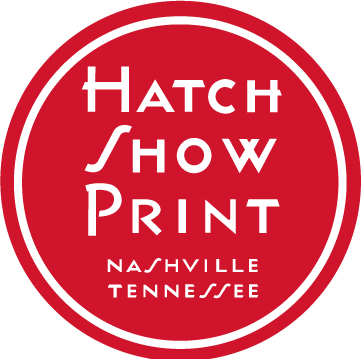
The International Printing Museum, in Carson, California, hosted the annual Wayzgoose for the Amalgamated Printers Association at the end of July 2017. The APA is made up of professionals, hobbyists, and artists, all actively letterpress printing and sharing examples of their work with one another. Those who can, gather in person to catch up. The host—one, or several, APA members– chooses a location that offers opportunities to print, see rare or interesting tools and print work, and swap tall tales of type, printing presses, or production. This year, a small but enthusiastic group gathered in Carson.
The IPM’s staff and volunteers, led by museum curator and founding director Mark Barbour (an APA member), spent the first three weeks of July clearing 8,000 square feet of museum storage space, to allow a new tenant to move in. Presses and equipment were relocated to every nook and cranny in the museum. , after all that hard work, none of the volunteers hesitated to grab a pallet jack to pull something out of a corner or tucked-away spot, so that Wayzgoose attendees could get close to the many rare presses in the museum’s collection. The space was activated for four days with workshops, lectures, and open-ended exploration of the collection. Attendees had time to operate presses and equipment. The images and videos that follow are just a few examples of what went on during the weekend.


Of particular interest were these one-sheet movie-poster printing blocks, made by Cato Show Print in Cato, New York. Like blocks designed, cut, and printed at Hatch Show Print, these blocks—except one—were carved in wood. White Cargo (1942) starred Clark Gable and Hedy Lamarr.
The largest press that was available to print the movie-poster blocks was originally used for making stereotype molds, called flongs. First, a forme, or typeset copy and imagery (often an advertisement), would be locked up in the press. Next, heat resistant, yet pliable, paper would be pressed very tightly over the forme, while being run through this press, to take on the reversed impression of the type and imagery, thus making a mold. Molds, also known as flongs, were much less expensive to distribute than a heavy metal plate, via mail, to newspapers and other publications across the country. Each newspaper or printer that received a flong would pour molten metal into the mold, to make a metal plate, called a stereotype, that contained the same content as the original forme. This stereotype, usually advertising something that was available nationally, such as a new movie, or automobile, would be inserted into a larger forme, most likely a newspaper, and printed. Once the content of a stereotype was no longer useful for printing, the plate was melted and recast in a different flong. In the twenty-first century, when flongs are no longer used, such a press also makes a useful printing press for large blocks.

History is everywhere at the International Printing Museum: The back of this type case bears the name and location of the recipient, hand addressed with flourish.
APA member and friend of the shop Greg Walters demonstrates the Ruggles Press, a rather rare printing press from 1855 that features somewhat unpredictable timing – which may explain its rarity.


The library at the museum has many diverse publications covering the history of printing, including a type catalog from Palmer & Rey, a type foundry from San Francisco. The title page displays a wonderful cut of the Palmer & Rey building, and inside, among fonts of type and ornaments, is a font of building parts that could be combined to make buildings and factories of the late nineteenth century, come to life in print.
One of the more popular curiosities was recently acquired by the museum: An awkward-looking platen press with a unique inking process. Each time the ink plate rotates, to maintain even ink distribution across the plate and the inking rollers, it rotates exactly ninety degrees. The press also looks like the sort of furniture that might hold a wet umbrella and prevent a puddle of rain from forming on the floor. In no time, the staff will have researched its provenance and hopefully learned more about the reasoning behind its quirky attributes.

Of course, an incredible catalog from Hamilton Wood Type Manufacturers was captivating . . . in addition to astounding examples of wood type, it includes a selection of funny stories used to display smaller wood type, that the manufacturer labelled paragraph type.

For general audiences, a visit to the museum includes a guided tour through the history of letterpress printing, and there’s an opportunity to experience the varied aspects of printing, with ongoing demonstrations by volunteer docents. Printing presses are running regularly, to demonstrate how they work, in addition to typecasting, and typesetting. The volunteers are happy to explain, and where possible, demonstrate any part of the process. For scholars and researchers, it is possible to have access to the library. And, for experienced printers, or those interested in getting inky, workshops and opportunities to pursue specific printing projects within the museum’s scope are available.
The International Printing Museum is close to Hollywood, and thus is regularly called upon to provide presses and expertise for films. These presses are often used to print counterfeit currency. While the museum is currently assembling a filmography for the website, most of the volunteers can rattle off a solid viewing list if you wish to see presses and printers in action on the silver screen.
